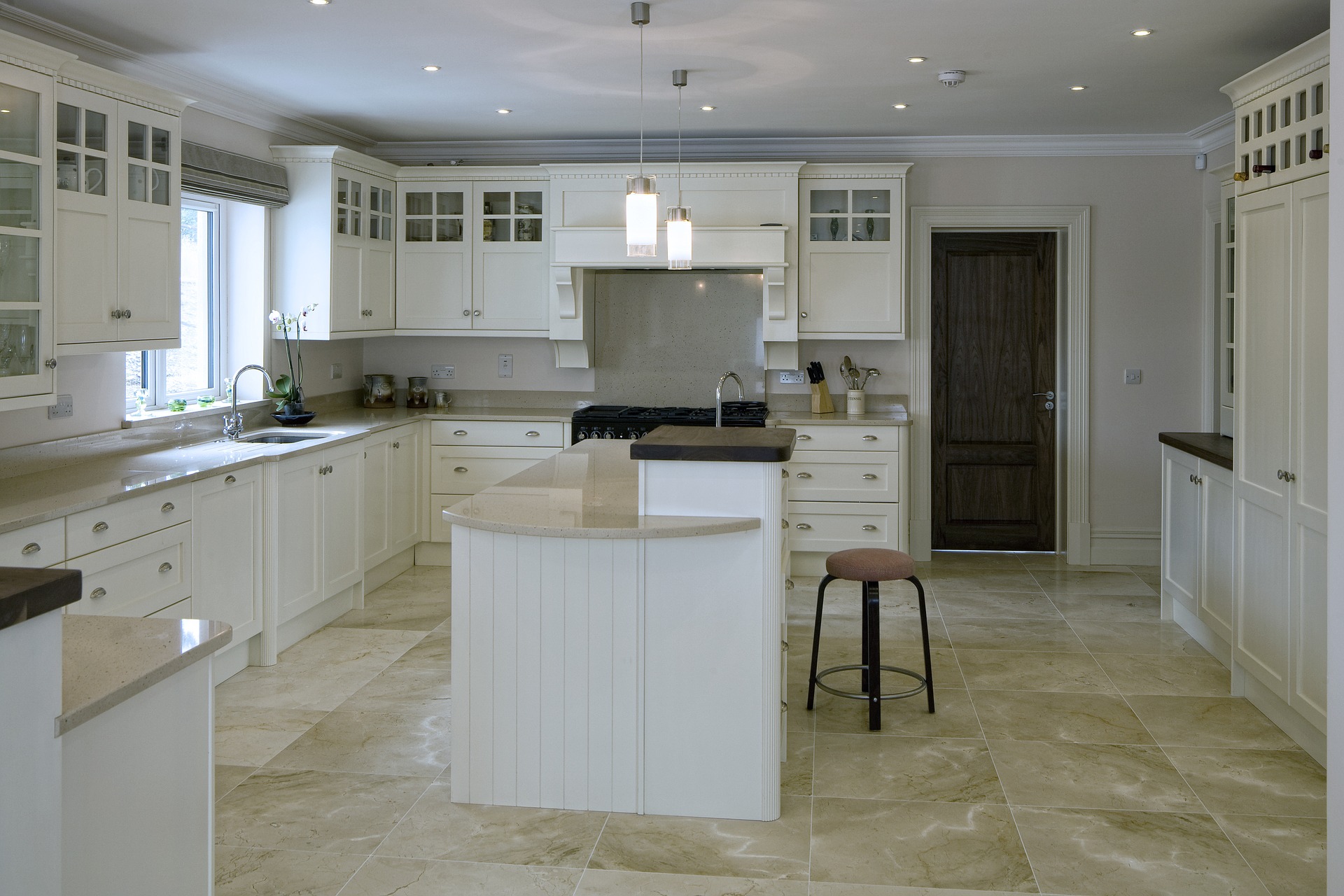A large part of our days are spent in our kitchens–be it cooking meals, unpacking groceries, hosting a gathering, or even other activities like paying bills or playing board games. Because there’s such a wide variety of things we do in the kitchen, it makes sense that lighting plays an important role. A room that has poor light conditions makes it frustrating and even painful to try to focus on chopping food or reading a recipe, and proper kitchen lighting makes all the difference.
With these tips you can properly light your kitchen to create a bright, welcoming, comfortable space for you and your family.
Types of Kitchen Lighting
There are three main kinds of lighting elements used in kitchens. Each of them plays a different role in the room’s design, function, and appearance, and when they come together they create a beautiful and comfortable kitchen space to suit all your needs.
Task Lighting
The first is task lighting. Fixtures used for task lighting tend to be small and focus on illuminating a small, specific area. They’re excellent to use over a workspace such as counters, a butcher’s block, or a kitchen island where your family often sits to do homework or chop veggies. Puck lights and strip lights are battery-powered and easily installed on the underside of cabinets to provide instant task lighting. Small pendant lights serve this purpose over areas without overhanging cabinetry. Your eyes will thank you for the extra brightness!
Ambient Lighting
The second lighting type in your kitchen is the ambient light. This is the main light source in your kitchen–the large overhead lights that diffuse their brightness throughout the room. You can improve the ambient light in your kitchen by adding another fixture, or by raising the height of the current fixtures. This is because when a light is placed higher, it’s able to diffuse the light further throughout the room. For this reason, lights mounted on the ceiling or recessed into the ceiling are the most common ambient light designs. If you orient the ambient lights above the counters, you’ll have an evenly lit workspace. In areas of your kitchen to which you want to draw more focus, a chandelier is an excellent ambient light fixture. To make your ambient lighting more adjustable, add a dimmer–this way you can decrease the brightness to set a cozy mood, or turn it up when you’re busy working. They’re a great way to save energy and make your kitchen more customizable.
Accent Lights
Finally, you have accent lights. These add the last lighting touches that really pull together the appearance of a room. They’re used as fixtures to highlight areas of your kitchen. Instead of providing extra lighting for focusing like task lights do, accent lights are used to illuminate darkened areas and make the room feel more luxurious. For instance, footlights running along the bottoms of your lower cabinets or strips placed above the cabinets add a soft, subtle glow. Chandeliers that are more for style than for providing ambient light can be considered accents.
It’s important to aim for a nice balance of all three of these lighting types when designing your kitchen. Changing the lighting in your kitchen is an easy way to make it look, feel, and function like a completely new space. There are fixtures in almost any design to fit your style, so don’t hesitate to finally get started on your kitchen light makeover.
Promise Electric works with residential customers and commercial accounts throughout Sarasota and Manatee counties for a wide spectrum of electrical service needs.



